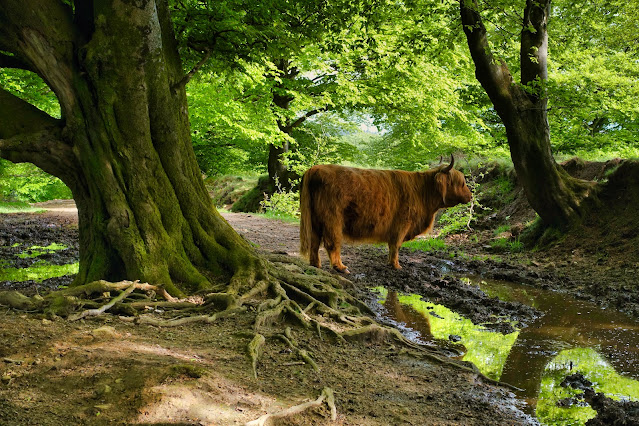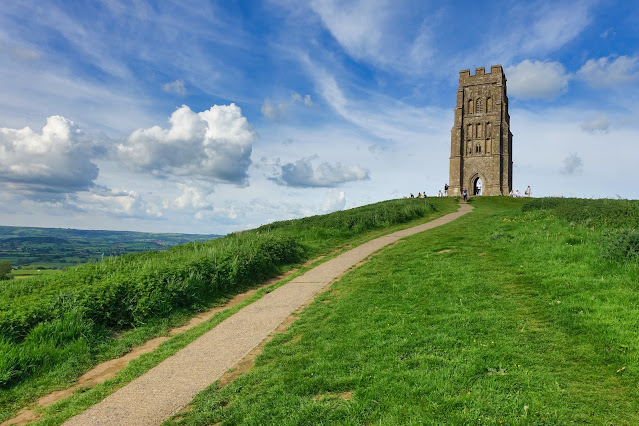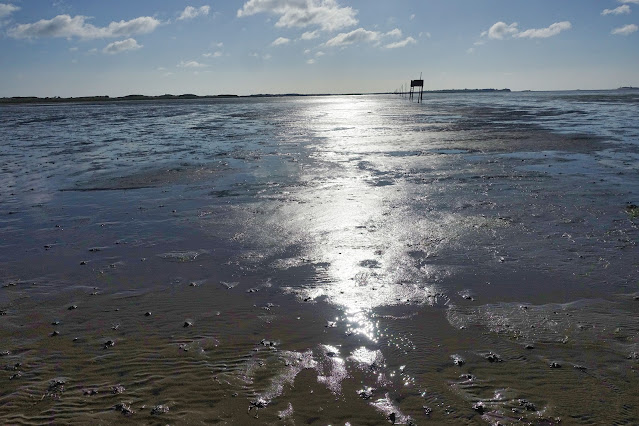England is a diverse country and this route allows the traveller to sample some of this diversity, from the clifftops of Cornwall to the bucolic charm of the Quantocks and the industrial heritage of Ironbridge. Highlights are often dictated by circumstance, light, personal encounters and multiple other factors, but in terms of place, my personal highlights are as follows:
Cornish Coast Path
For me, this constitutes the very best of the Southwest Coast Path. The wildness of the cliffs contrasts with the charm of the coastal villages and the deep blue of the ocean. There is a quirkyness about Cornwall that is both endearing and unique, giving the area a strong cultural identity. Sample the pasties, cream teas, icecream, fish and chips, and other seafood fare. Join the surfers in the waves and stroll along the wide open sands, before heaving youself up impossibly steep steps to arrive breathless on a windswept clifftop.
 | ||||||||||
| The drama of Bosigran | |
Exmoor
Exmoor is less of a moor and more of a wide open space, framed by windblasted trees and roamed by wild horses, cattle and sheep. Like many moorland areas, the real beauty is to be found in the incised valleys that lead up to the upland plateau. Here there is a richness of life and a peaceful slowness that is highly attractive.
 |
| Exmoor valley |
Watchet Beach
Lacking the fanfare of the so-called 'Jurassic Coast', the beach at Watchet near Minehead is sim,ilarly blessed with a multitude of fossils and fascinating rock formations. At low tide, it is possible to stroll along the shore which is littered with large fossils, partiularly ammonites.
 |
| Watchet fossil |
Quantocks
This range of Somerset hills may be modest in height but what they lack in height is more than made up by their beauty. The ancient woodland, protected by the National Trust is especially attractive, with wild horses and highland cattle grazing the slopes.
 |
| On the crest of the Quantock Hills |
Glastonbury Tor
Glastonbury is, of course, known for the music festival that has made it famous throughout the world. However, it has long exerted a spiritual draw and this spiritual quality is evident in the tor - a tower standing on a hill, 150m above the plain. The hill dominates everything around, with a pilgim's way linking the tor to nearby Wells Cathedral.
 |
| Glastonbury Tor |
Severn Bridge
There can't be many places where you walk 3km along a motorway, 50m above the sea. Such is the Severn Bridge, although the pedestrian and cycle route is suitably distant from the traffic. The bridge spans are truly majestic. If you suffer from vertigo, don't look down!
 |
| Severn Bridge from below |
Llanthony Abbey
Offa's Dyke takes the walker through delectable scenery - the wooded gorge of the River Wye, rolling hills and lush farmland - but in the soft folds of the Black Mountains, lies a special place. Llanthony Abbey is less celebrated than Tintern Abbey, but is delightfully secluded and in tune with its surroundings. Take the time to descend from Offa's Dyke and camp beside the ruins in the quiet of the evening.
 |
| A perfect evening at Llanthony Abbey |
Ironbridge
One of the main attractions of this walk is its diversity. England has a long history and part of this is its industrial heriatge. This is no better captured than at Ironbridge where several museums document this passage of English history, most famously in evidence in the form of the world's first iron bridge.
 |
| Industrial heritage at Ironbridge |
Staffordshire & Worcestershire Canal
Canals form a haven of peace in industrial areas. This is no more evident than on the fringes of the West Midlands where the Staffordshire and Worcestershire Canal slinks alongside the dominant M6. Once on the canal, you enter a land that time forgot - a sleepy backwater where rushing is a dirty word. Canals create their own sub-culture, with boats becoming extensions of their owners.
 |
| The sleepiness of canal life |
Cannock Chase
Located in the middle of the country,
Cannock Chase is not a prime destination for tourists, but I was struck
by its understated beauty. A myriad of paths criss-cross the heath and
woods, forming ideal terrain for the budding orineteer. It is an oasis
of natural woodland in an urban jungle, providing a nature corridor from
Shopshire to Staffordshire.
 |
| Cannock Chase - Midland oasis |
Little Switzerland
The Derbyshire Dales are so very English - human-scale hills, abundant greenery and quaint villages. The route combines a number of steep-sided valleys, pock-marked with caves and overlooked by limestone rock walls that act as a magnet to generations of climbers. The entrance to one of the most beautiful of the dales - Dovedale - is known as 'Little Switzerland', with its perfect grassy hills, burbling river and tourists to match. Stay at the hostel in the grounds of the National Trust and sampole its delights when the tourists have largely departed.
 |
| A soft (wet) morning in Little Switzerland |
Malham Cove
After the seemingly endless moors of the Southern Pennines, Malham Cove comes as a startling sight, presenting a sheer wall behind a garden of Eden. The Pennine Way leads up to its left, allowing an investigation of the extensive limestone pavement above and a cautious peer into the abyss. A short way further on, Malham Tarn exudes a more gentle beauty.
 |
| The headwall of Malham Cove |
Upper Wharfedale
The main Pennine Way takes a dogleg to Middleton in Teesdale, but that seemed to make no sense for this route. I therefore devised an alternative over Wild Boar Fell and Asby Scar. Before that I left the Pennine Way at Malham Tarn and made my way over to Wharfedale which is one of the most attractive parts of the Yorkshire Dales, graced as it is with iconic drystone walls, vibrant green fields and dark hills beyond. Following the valley, rather than striding the tops, allows you to savour the crowning joy of the dales which is just that - the dales - and not the moors that overlook them.
 |
| Approaching Bucken in Upper Wharfedale |
Hadrian's Wall
Unsurpringly, given its status as a World Heritage Site, Hadrian's Wall is an undoubted highlight of the Pennine Way. The wall is something of a rollercoaster, rising and falling along the crest of a range of hills. Not only does the wall evoke a sense of what it must have been like to be a Roman centurion, but it is highly scenic.
 |
| Hadrian's Wall near Crag Lough |
Lindisfarne
Lindisfarne, otherwise known as Holy Island, makes an appropriately significant ending place for the journey. The traditional way of completing St. Cuthbert's way which forms the last part of the route, is to walk across the tidal flats to the island at low tide. This takes about an hour, following a line of posts across the mudflats, and is typically doen barefoot.
 |
| Beginning the walk across the bay to Lindisfarne |